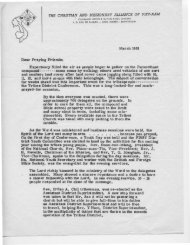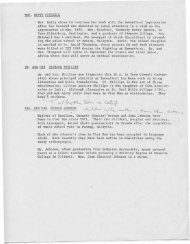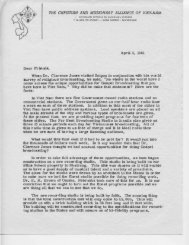WITH CHRIST IN INDOCHINA - IndoChina1911
WITH CHRIST IN INDOCHINA - IndoChina1911
WITH CHRIST IN INDOCHINA - IndoChina1911
Create successful ePaper yourself
Turn your PDF publications into a flip-book with our unique Google optimized e-Paper software.
The<br />
learned that the coffee planter<br />
had been asking God to open some way whereby the<br />
more than 600 Mois employees on his plantation<br />
might hear the gospel. There were four villages of<br />
those people located on his private property, and<br />
even the Government could not dictate what should<br />
not be done there.<br />
It was arranged that fortnightly visits should be<br />
made to the plantation by the Mois worker from<br />
DaUt. All expenses were paid by the planter, and<br />
work was discontinued on the plantation for the<br />
week-ends that the evangelist was there, in order<br />
that all might attend the services. The gospel was<br />
thus given to the Djirinh Mois in spite of the offi¬<br />
cial refusal. It was the Lord's way of opening a<br />
closed door, and the only cost was a hotel bill of<br />
about ten dollars and a new part for the missionary's<br />
automobile. A couple of years later the official ban<br />
was lifted, and a modest chapel was built at Djirinh.<br />
The conference of the Central Annamese District<br />
sent a native missionary couple to the Khaleus tribe<br />
which inhabits the far western section of the Hue<br />
District. The Resident Superieur consented to the<br />
appointment, but said he could not allow them to<br />
preach for at least a year. He suggested that they<br />
find a home in the Khaleus region and study the<br />
language; and stated that when they had become<br />
known to the people, they would probably be regularly<br />
authorized.







